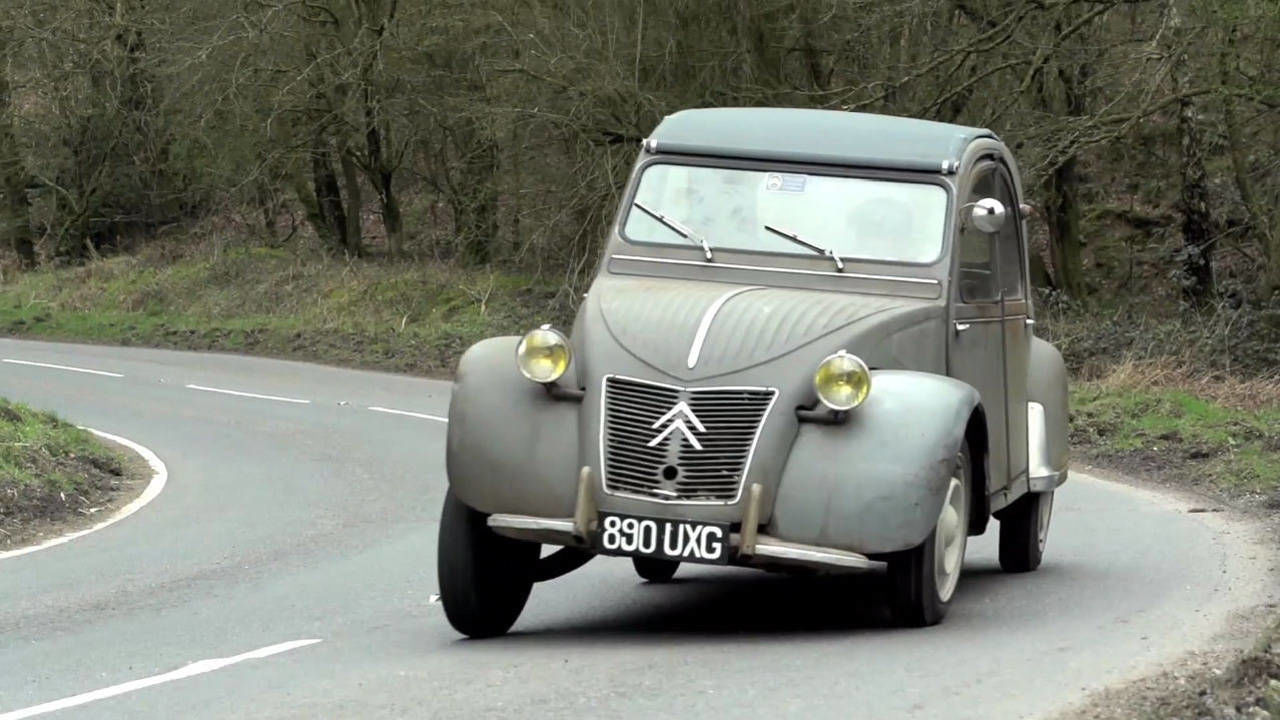Everyone quotes Ferris Bueller's Day Off the first time they drive a fast Ferrari. The first time I met a slow Citroën, I couldn't shake the film, either. Not the part where Mia Sara pours herself into Matthew Broderick's fake Cal Spyder. Earlier.
"Life moves pretty fast," Broderick says. "If you don't stop and look around once in a while, you could miss it."
This is perpetually true, unless you are inside a Citroën 2CV. There you miss nothing, because the car is so astonishingly slow, you have time to see everything. Twice.
Some 3.87 million 2CVs were built between 1949 and 1990. My friend Greg Long insisted on lending me his for a week last month, when I found myself carless in Seattle. I don't know how to thank Greg for this, but it would be journalistically improper to label him, in print, the greatest living person in the Pacific Northwest. So this is me, definitely not doing that.
The 2CV was France's VW Beetle, a nation's cheap mobility. Simple body, front-drive, air-cooled twin. Greg's car is a 33-hp 1972; early 2CVs made 12 hp, which isn't so much a power rating as the minimum number of years it would take you to drive to Paris, in a 12-horse Cit, from anywhere that is not Paris. (Like, say, the outskirts of Paris.) Europeans nicknamed the car "Tin Snail," but it looked more like the mash-up of a Quonset hut and a stoned Pomeranian. The speed allusion was apt, if generous. Hitch a herd of narcotized snails to a pair of roller skates and yell "Mush!" and you'd still beat a 2CV off a light
I had driven slow cars before, but never that slow, and never for so long. The fun ones, like the Renault Le Car, are happy trade-offs. The Citroën, built for rutted French farmland, swapped velocity for comfort and a goofy sine wave of drama.
The great sacrifice of progress is the minimization of fear of death.
On the move, a late 2CV is just quick enough to be safe in traffic. You go everywhere flat out, constantly planning. Misjudged merges produce mild heart attacks. With comically soft springs—you can pull a parked 2CV into a 25-degree list by simply tugging on a roof rail—the car rolled like an inflatable punching clown, perpetually flirting with falling over.
That drunken-wheelbarrow chassis could squeeze hyperbole from a dead grandmother. In one roundabout, I may have allowed a door handle to penetrate the earth and scrape China's Great Wall. Chiefly, I was reminded that the great sacrifice of automotive progress is the minimization of fear of death. (Note that I didn't say "chance.") Good old Hunter-Thompson-Sausage-Creature, God-we-feel-alive, barely-escaped-from, death.
Example: Once, trundling down an 18 percent grade into a crowded intersection, I suspected I was about to die. I then laid into the Snail's ferociously uninspiring brakes and became sure of it. At which point a sense of inevitability overcame. I grinned and the car howled, and the car grinned and I howled, and we went ripping through the intersection and around a corner like a runaway train, engine moaning and chassis winding up like a clock spring.
Time collapsed. A singularity was briefly created somewhere in my undercarriage. When the whole thing was over, survival, though obvious, seemed implausible. Bermuda Triangle details arose: My cellphone had magically migrated to the back seat. It was sunny, but the wipers were on. My wife, riding passenger, looked over and said, firmly, "We are not doing that again."
At peak, the speedo hit a solid 33 mph. Possibly 34.
A week later, I flew to Texas to test the Cadillac ATS-V. It was . . . fine. A good car. Maybe even very good. The engine makes 464 hp and a raspy snarl. It cranked through Turn 17 at Circuit of the Americas sideways and gentle, a froufed-up hooligan with leather and manners.
But there was no fear of death, no implausible. Several times, I found myself wishing for less car, not more.
Home now, back from Texas, my undercarriage is making odd demands. I have been broken, and the remedy is obvious.
If I'm lucky, Greg keeps his garage unlocked.
Sam Smith is an editor at large for R&T. His continued marriage, though obvious, seems implausible.
From: Road & Track


Комментариев нет:
Отправить комментарий